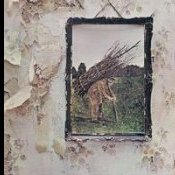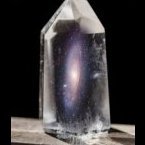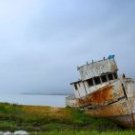-
Posts
3,084 -
Joined
-
Last visited
Reputation Activity
-
 Jaager got a reaction from JeffT in La Marine De Louis XVI by Patrick Villiers plans only - New ANCRE publication
Jaager got a reaction from JeffT in La Marine De Louis XVI by Patrick Villiers plans only - New ANCRE publication
An email add came in from ANCRE yesterday. I have no French, so I can only guess about them.
The subject seems to focus on the fleet of Louis XVI that was involved in the battle at the Chesapeake Capes that allowed for the successful siege at Yorktown.
The text is French only, so I will wait for an English translation.
There also seen to be a set of what I guess are lines plans at 1/72 or smaller for many of the vessels of the French fleet.
I tried to use the main site to translate, but the new product is not there yet.
My CC company added a new step with a password that I have no clue about - so my purchase failed. I have to wait for PayPal to do a transfer ( with these ridiculously now interest rates, what is the point in PP taking a week to transfer funds? ) ( I neither have nor want the capability for text on a phone - but banks are seeming to act like EVERYBODY has active phone texting. )
I am really interested in seeing if this new set is really lines plans for a whole French fleet. For one, the City of Paris is potentially a big deal here - being just down the road from Cape Henry.
-
 Jaager got a reaction from J11 in foolish newbee
Jaager got a reaction from J11 in foolish newbee
A first rate ship of the line was a significant undertaking for any government of the time. A model of one involves similar effort on the part of an individual.
Should you begin to feel overwhelmed or discouraged give some thought to leaving the project on the ways and switching to a much smaller vessel - not smaller in the actual model size - rather a smaller vessel at a larger scale. When the basics become a familiar skill, the first rate will seem to present a more shallow slope.
-
 Jaager got a reaction from mtaylor in foolish newbee
Jaager got a reaction from mtaylor in foolish newbee
A first rate ship of the line was a significant undertaking for any government of the time. A model of one involves similar effort on the part of an individual.
Should you begin to feel overwhelmed or discouraged give some thought to leaving the project on the ways and switching to a much smaller vessel - not smaller in the actual model size - rather a smaller vessel at a larger scale. When the basics become a familiar skill, the first rate will seem to present a more shallow slope.
-
 Jaager got a reaction from Canute in Framing, best materials
Jaager got a reaction from Canute in Framing, best materials
Ash, like Hickory and any Oak, has open pores and a distinct and distracting grain. This causes any one of them to be a poor choice for any part that is to be left natural. It also requires that the pores be filled if any of these species are to be painted.
If the framing is to be completely planked over and the deck is completely planked, Ash will serve, since it will be totally hidden.
Pet peeve about the internet:
Now, about your question as asked, This is not any sort of competition. A ranking based on some arbitrary score serves no purpose. Using the superlative tense is some creature of the internet, and in most cases takes a discussion in a non productive direction. In addition, the best in a group that is all crap, is still crap. A productive ask would be a search for excellence. You do not supply your location on Terra. If you are located in eastern North America, and you are seeking commercially available domestic wood that is a reasonable price, Hard Maple and Black Cherry are excellent species to use for framing. If you can harvest, mill and season your own wood, the choice of excellent species becomes a much larger one.
-
 Jaager got a reaction from mtaylor in Chipping effect on wood?
Jaager got a reaction from mtaylor in Chipping effect on wood?
I may well be alone in this, but I have no clue about the subject of your inquiry.
The best I can imagine is that your area of interest is steel Navy or merchant and it is an older vessel with an uneven multi coat paint job that is being simulated.
If this is the situation, the guys who do plastic models and whose focus is on the finish instead of the structure are probably a more productive resource.
For me, and I suspect many others who focus on wood, paint and the finish are a necessary evil.
-
 Jaager got a reaction from Canute in Chipping effect on wood?
Jaager got a reaction from Canute in Chipping effect on wood?
I may well be alone in this, but I have no clue about the subject of your inquiry.
The best I can imagine is that your area of interest is steel Navy or merchant and it is an older vessel with an uneven multi coat paint job that is being simulated.
If this is the situation, the guys who do plastic models and whose focus is on the finish instead of the structure are probably a more productive resource.
For me, and I suspect many others who focus on wood, paint and the finish are a necessary evil.
-
 Jaager got a reaction from Keithbrad80 in Chipping effect on wood?
Jaager got a reaction from Keithbrad80 in Chipping effect on wood?
I may well be alone in this, but I have no clue about the subject of your inquiry.
The best I can imagine is that your area of interest is steel Navy or merchant and it is an older vessel with an uneven multi coat paint job that is being simulated.
If this is the situation, the guys who do plastic models and whose focus is on the finish instead of the structure are probably a more productive resource.
For me, and I suspect many others who focus on wood, paint and the finish are a necessary evil.
-
 Jaager got a reaction from mtaylor in Ilustrated copy
Jaager got a reaction from mtaylor in Ilustrated copy
I suspect that this particular vessel is a fictional one. This means that it is difficult to get it wrong - since there is no specific right - as long as you are true to what was done in the particular time period. I did a Google search and looked at the UK site for Mantua kits. The copy reads as though this is indeed a stand in for a broad class of two masted brigantines. The site photo shows a quarter badge and the vessel looks mid 18th century to me.
1. the site lists instructions in English. - perhaps contact with them could gain you a copy of their instructions.
2. they list it as being 1:150 scale - this is well within the miniature range - it makes matching prototype practice difficult - tricks and illusions are needed -these are their own set of skills.
3. Wooden ship model kits are a unique sort of critter. I think it is not reasonable to expect the instructions for a particular kit to be sufficient information for completion. They should be complete in the What for a particular vessel. The How is a different matter. There are books aplenty covering construction techniques and the myriad paths available to get there. There are journal articles readily available. This site has CD versions of three of the four major English language ship model journals. Only Model Shipwright is being lost to time. This is probably due to a major failure at the Suit level of the publisher. This site has build logs. The methods shown are far from specifically limited to the individual subject. For miniature - there are three major books that I think can still be obtained. If you are in anyway serious about this, the accumulation of a significant reference library is all but unavoidable. The period of your ship has a fairly large volume of available information - both contemporary and more modern interpretations.
-
 Jaager got a reaction from mtaylor in Clinker planking - Dusek Le Cerf
Jaager got a reaction from mtaylor in Clinker planking - Dusek Le Cerf
I think that the garboard is the key factor. The imperative is to avoid having it creep up at the stem and stern. The horizontal part of the rabbet ends farther back than is intuitive. It is important to start cutting into the plank where the horizontal ends.
The other suggestion is to use the planking fan to measure the spilling for each strake anew.
-
 Jaager got a reaction from Canute in Byrne's saw for cutting thin brass???
Jaager got a reaction from Canute in Byrne's saw for cutting thin brass???
In theory, I would use a slitting blade. Thin sheets of non ferrous metal will probably react poorly to the stress of cutting if it is pushed thru the blade by itself.
I would use thin sheets of model aircraft plywood and double sided tape to make a sandwich. The metal fixed between two sheets of ply. Cut using one of the more coarse toothed slitting blades, but still a lot of teeth.
I have no actual experimental data to confirm that this would work. But, I expect that curling and other adverse problems would be avoided.
A top hold down stick and butt end pusher should resist kickback.
-
 Jaager got a reaction from mtaylor in Byrne's saw for cutting thin brass???
Jaager got a reaction from mtaylor in Byrne's saw for cutting thin brass???
In theory, I would use a slitting blade. Thin sheets of non ferrous metal will probably react poorly to the stress of cutting if it is pushed thru the blade by itself.
I would use thin sheets of model aircraft plywood and double sided tape to make a sandwich. The metal fixed between two sheets of ply. Cut using one of the more coarse toothed slitting blades, but still a lot of teeth.
I have no actual experimental data to confirm that this would work. But, I expect that curling and other adverse problems would be avoided.
A top hold down stick and butt end pusher should resist kickback.
-
 Jaager got a reaction from bruce d in Byrne's saw for cutting thin brass???
Jaager got a reaction from bruce d in Byrne's saw for cutting thin brass???
In theory, I would use a slitting blade. Thin sheets of non ferrous metal will probably react poorly to the stress of cutting if it is pushed thru the blade by itself.
I would use thin sheets of model aircraft plywood and double sided tape to make a sandwich. The metal fixed between two sheets of ply. Cut using one of the more coarse toothed slitting blades, but still a lot of teeth.
I have no actual experimental data to confirm that this would work. But, I expect that curling and other adverse problems would be avoided.
A top hold down stick and butt end pusher should resist kickback.
-
 Jaager got a reaction from captain_hook in Byrne's saw for cutting thin brass???
Jaager got a reaction from captain_hook in Byrne's saw for cutting thin brass???
In theory, I would use a slitting blade. Thin sheets of non ferrous metal will probably react poorly to the stress of cutting if it is pushed thru the blade by itself.
I would use thin sheets of model aircraft plywood and double sided tape to make a sandwich. The metal fixed between two sheets of ply. Cut using one of the more coarse toothed slitting blades, but still a lot of teeth.
I have no actual experimental data to confirm that this would work. But, I expect that curling and other adverse problems would be avoided.
A top hold down stick and butt end pusher should resist kickback.
-
 Jaager got a reaction from mtaylor in Constellation Spars
Jaager got a reaction from mtaylor in Constellation Spars
Mark,
The remark about builders plans was meant as bait for others. It was not aimed at you. There is/are thread/s about the USN pre War of 1812 frigates that seem to disparage builders plans and get way into the weeds, making a major production of microscopic factors. The implied tone is that unless the plans are perfect, a model of the ship should not be attempted. Maybe if the build was for display in a naval historical museum, I see the the validity, but otherwise, not so much.
About your above comments, I am all but horrified when I see a model of the supposed 1799 frigate with an elliptical stern. "That's just not right."
-
 Jaager got a reaction from Gregory in Constellation Spars
Jaager got a reaction from Gregory in Constellation Spars
Mark,
The remark about builders plans was meant as bait for others. It was not aimed at you. There is/are thread/s about the USN pre War of 1812 frigates that seem to disparage builders plans and get way into the weeds, making a major production of microscopic factors. The implied tone is that unless the plans are perfect, a model of the ship should not be attempted. Maybe if the build was for display in a naval historical museum, I see the the validity, but otherwise, not so much.
About your above comments, I am all but horrified when I see a model of the supposed 1799 frigate with an elliptical stern. "That's just not right."
-
 Jaager reacted to mtaylor in Constellation Spars
Jaager reacted to mtaylor in Constellation Spars
The plans you mentioned sound like a good source, Jaager.
I'm not distaining builders plans. The problem was that many if not most of the Constellation plans available back in the early 1900's were cobbled, changed, and some destroyed while the ship folks worked to turn the 1854 version into the original. They tried to make (and mostly succeeded) in getting people to believe that when the original went in, it was taken apart and rebuilt into the the 1854 version, thus the rounded stern and the ship being a bit bigger than the original.
-
 Jaager got a reaction from mtaylor in Constellation Spars
Jaager got a reaction from mtaylor in Constellation Spars
Mark,
HIC drew the builders plan for Congress/Constellation (HIC #8) so SI would be one possible source.
I am perplexed by the disdain expressed for the value of builders plans. At base it is a chance to see how our shipyards do using the original source.
-
 Jaager got a reaction from Zocane in Best Wood Filler to use on ship hull
Jaager got a reaction from Zocane in Best Wood Filler to use on ship hull
Wood flour of the planking species mixed with PVA ( Titebond II for me).
-
 Jaager got a reaction from Sailinganthony1812 in Constellation Spars
Jaager got a reaction from Sailinganthony1812 in Constellation Spars
Caution is advised regarding this name. It was used for two different ships. The 1799 frigate underwent the fade based evolution at a time of great change, so the year that you are representing has an affect on the dimensions. There is data in the Appendix of HASN.
The second ship with this name still sort of exists. It was a corvette and the last of the sailing warships for the USN. It has undergone several severe cosmetic alterations, some pure fantasy that tried to make it into the 1799 frigate. HASN has dimensions for Albany that are within a decade of the launch of the corvette.
The various captains had a lot of say in how these ships were spared and some were fad prone. This is probably a situation were close enough is good enough.
A more important factor is to get the spared and rigged model into a protective case. A view of restoration logs here should demonstrate the result of leaving a model of a sailing vessel open to the environment.
-
 Jaager got a reaction from uss frolick in Constellation Spars
Jaager got a reaction from uss frolick in Constellation Spars
Caution is advised regarding this name. It was used for two different ships. The 1799 frigate underwent the fade based evolution at a time of great change, so the year that you are representing has an affect on the dimensions. There is data in the Appendix of HASN.
The second ship with this name still sort of exists. It was a corvette and the last of the sailing warships for the USN. It has undergone several severe cosmetic alterations, some pure fantasy that tried to make it into the 1799 frigate. HASN has dimensions for Albany that are within a decade of the launch of the corvette.
The various captains had a lot of say in how these ships were spared and some were fad prone. This is probably a situation were close enough is good enough.
A more important factor is to get the spared and rigged model into a protective case. A view of restoration logs here should demonstrate the result of leaving a model of a sailing vessel open to the environment.
-
 Jaager got a reaction from mtaylor in Framing, best materials
Jaager got a reaction from mtaylor in Framing, best materials
Ash, like Hickory and any Oak, has open pores and a distinct and distracting grain. This causes any one of them to be a poor choice for any part that is to be left natural. It also requires that the pores be filled if any of these species are to be painted.
If the framing is to be completely planked over and the deck is completely planked, Ash will serve, since it will be totally hidden.
Pet peeve about the internet:
Now, about your question as asked, This is not any sort of competition. A ranking based on some arbitrary score serves no purpose. Using the superlative tense is some creature of the internet, and in most cases takes a discussion in a non productive direction. In addition, the best in a group that is all crap, is still crap. A productive ask would be a search for excellence. You do not supply your location on Terra. If you are located in eastern North America, and you are seeking commercially available domestic wood that is a reasonable price, Hard Maple and Black Cherry are excellent species to use for framing. If you can harvest, mill and season your own wood, the choice of excellent species becomes a much larger one.
-
 Jaager reacted to Bob Cleek in What Wood Is Best For What
Jaager reacted to Bob Cleek in What Wood Is Best For What
My comment on this is a bit late to the dance, but I missed this thread on the first bounce.
As for milling, my late friend Elof Granberg invented the "Alaskan mill" chainsaw planking mill and I've played with them some. They do work, but their kerf is large. They are fine if your are milling large logs, but not practical for small stuff. As you note, securing the small logs for cutting is a problem.
I've found that for modeling stock, which doesn't have to be large dimension stuff, splitting the log is often a good way to go for logs that are too big for my 14" bandsaw. I rip a cut the length of the log with a circular saw and then drive wedges into the kerf and split the log into halves, quarters, and so on, until it's small enough to handle on the bandsaw. I square two sides on my jointer, or plane one face by hand and then cut slabs off with the bandsaw. I keep billets fairly large and mill pieces as needed from the billets instead of trying to mill a bunch of standard sized stock. Building boats or models, nothing is dimensioned lumber ever anyway. It saves a lot of wood that way. You only cut what you need.
Another advantage of splitting your logs is that you minimize grain run-out. Trees are basically "cones" with the "rings" getting progressively smaller as the trunk or branch tapers upward. By splitting along the grain, you know that side of your piece has its grain running right along the split, instead of running off the edges of your planks when cut square. Sawyers of commercial stock would never do that these days because they can get more lumber out of a straight cut than they can along the ring, but modeling stock is small bits and pieces and we can afford to be "wasteful" when we mill it.
-
 Jaager got a reaction from Bob Cleek in Framing, best materials
Jaager got a reaction from Bob Cleek in Framing, best materials
Ash, like Hickory and any Oak, has open pores and a distinct and distracting grain. This causes any one of them to be a poor choice for any part that is to be left natural. It also requires that the pores be filled if any of these species are to be painted.
If the framing is to be completely planked over and the deck is completely planked, Ash will serve, since it will be totally hidden.
Pet peeve about the internet:
Now, about your question as asked, This is not any sort of competition. A ranking based on some arbitrary score serves no purpose. Using the superlative tense is some creature of the internet, and in most cases takes a discussion in a non productive direction. In addition, the best in a group that is all crap, is still crap. A productive ask would be a search for excellence. You do not supply your location on Terra. If you are located in eastern North America, and you are seeking commercially available domestic wood that is a reasonable price, Hard Maple and Black Cherry are excellent species to use for framing. If you can harvest, mill and season your own wood, the choice of excellent species becomes a much larger one.
-
 Jaager got a reaction from Devildog36 in Anyone familiar with this place for wood and supplies
Jaager got a reaction from Devildog36 in Anyone familiar with this place for wood and supplies
Devildog,
You may have more resources than you realize. The Washington Ship Model Society is based in northern Virginia. Between it and the local woodworkers guild and the local schools, you may have access to the use of the necessary machinery to produce your own stock.
Not far from you - in Elkwood, VA is C.P.Johnson Lumber - with excellent prices on Hard Maple, Black Cherry, Yellow Poplar, Yellow Birch their inventory is out of the two exotics that I would consider = Yellow Heart (Pau Amarillo) and Granadillo (Macacauba). The other domestics have unuseful grain characteristics.
-
 Jaager got a reaction from mtaylor in Problems with a medieval bipod mast
Jaager got a reaction from mtaylor in Problems with a medieval bipod mast
If support for a sail does not fit, could it fit another function? Would it work as part of a crane? Would there be work for a floating crane during its period.
I tried to imagine how or even why it would function as a single mast with alternate steps.











